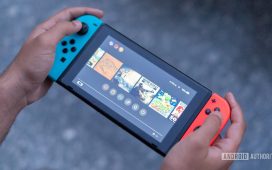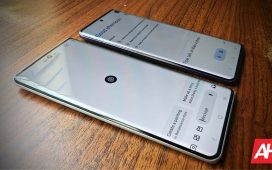
Edgar Cervantes / Android Authority
Moving to a new location often requires numerous adjustments, including making new friends, finding local hotspots, and adapting to your environment. One challenge you might face is discovering that your current phone carrier no longer provides reliable or fast service in your new area. If this happens, testing competing networks can help you find the best option for your region. Unfortunately, the major carriers typically don’t offer trials, and while you might be able to cancel a new plan for a full refund within a limited period, navigating their refund policies can be a hassle.
Thankfully, there’s a simpler way to evaluate the major networks without breaking the bank or jumping through hoops. Enter US Mobile, a carrier that uniquely provides access to all three major networks in the U.S.: Verizon, AT&T, and T-Mobile.
US Mobile: Testing the Big Three Networks Made Easy

Edgar Cervantes / Android Authority
US Mobile is the only carrier in the US to currently offer access to all three major US networks. Here’s a closer look at what each of these networks look like on US Mobile, as well as how they’ll compare to what you’d get if you were testing postpaid:
- Warp (Verizon): Offers the same priority level as mid- and high-tier postpaid Verizon plans.
- Dark Star (AT&T): By default, provides slightly lower priority than AT&T’s mid-tier plans, but you can upgrade for $12 to match the default postpaid mid- and high-tier priority.
- Light Speed (T-Mobile): Functions like a typical prepaid T-Mobile service, meaning you won’t have top-tier priority. However, this is still a great way to assess network congestion in your area. If you experience solid or mostly solid performance through US Mobile, a higher-priority T-Mobile plan will likely perform flawlessly.
US Mobile even allows you to switch between networks up to two times for free (lifetime, not monthly), with subsequent switches costing just $2 each.
US Mobile is worth trying, even if you don’t want to stick with it
Maybe you prefer to stick to the big networks or want to consider another prepaid network in the long-term. We’d still try US Mobile if you’re unclear about which major network is the best fit for you.
Even if you don’t plan to stick with US Mobile, it’s an excellent way to compare networks. While it won’t give you a perfect one-to-one comparison with postpaid plans, it’s close enough to reveal which network is least congested in your area.
To give US Mobile a try, you have two paths you can take:
- Sign up for a free trial: This requires porting your current number to US Mobile. It’s a good option if you’re certain your current provider no longer meets your needs and don’t mind porting out to another network if you don’t intend to use US Mobile long-term.
Pay $25 for a month of service: This plan includes unlimited priority data for up to 35GB. With this option, you can get a new line (or port your number, if preferred) and test networks while keeping your existing carrier.
If you’re moving or simply dissatisfied with your current network’s performance, US Mobile offers a convenient and cost-effective way to test all three major networks. To learn more, check out our detailed comparisons like our US Mobile vs T-Mobile and US Mobile vs Verizon guides.









